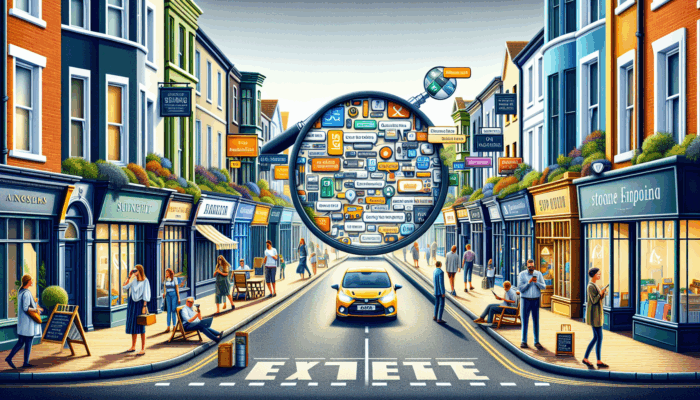Supporting small businesses, startups, and in-house teams across the United Kingdom for over 30 years.
Ezi Gold offers detailed insights into website costs — from DIY to professional services —helping you make informed decisions.
Table of Contents
ToggleExploring Website Costs: From DIY Solutions to Professional Services
How Much Does a Website Cost: When embarking on the journey to create a website, one of the pivotal questions you may ponder is, “How much will it cost?” The answer to this question can vary significantly, influenced by factors such as the type of website you require and the degree of customisation and functionality you seek. This article aims to dissect the costs associated with various website categories, from DIY solutions to professional builds, empowering you to make an informed, strategic decision that aligns with your goals.
Essential Terminology for Understanding Website Costs

Before delving into the specifics of costs, it is crucial to familiarise yourself with some essential terms that will aid in your understanding:
- Content Management System (CMS): This refers to the software that powers your website, enabling you to update content, such as text and images, effortlessly without requiring in-depth technical skills.
- Responsive Design: This feature ensures that your website automatically adjusts its layout based on the device it is viewed on, mobile phone, tablet, or desktop computer, enhancing the user experience.
- Search Engine Optimisation (SEO): This involves implementing strategic changes to your website to improve its visibility on major search engines such as Google and Bing, thereby attracting more organic traffic.
Exploring Different Types of Websites and Their Cost Implications
Creating Affordable DIY Websites
DIY websites are the most cost-effective option, typically priced between £300 and £1,000. They are particularly suitable for personal projects or small enterprises that are just beginning their online journey.
Advantages of DIY Websites:
- You maintain complete control over every aspect of your website.
- Quick setup is possible, often completed within a few days, allowing for an immediate online presence.
- Ongoing costs are minimal, consisting mainly of basic hosting and domain registration.
Disadvantages of DIY Websites:
- This option requires time to learn how to navigate and utilise the chosen platform effectively.
- Customisation and scalability are limited due to inherent template constraints.
- Popular platforms such as Wix, Weebly, and Squarespace are frequently used, providing user-friendly drag-and-drop functionality.
Running Costs: Expect to spend a few hundred pounds annually for hosting and domain services.
Investing in Basic Websites for Enhanced Functionality

Basic websites represent a step up from DIY solutions and are typically built by small web companies or individual developers. The cost for these websites generally falls between £500 and £2,000.
Advantages of Basic Websites:
- They offer a more professional design and reliable performance compared to DIY options.
- These websites often include essential SEO practices and responsive design features.
- You do not need to learn new software; the developer manages all technical aspects.
Disadvantages of Basic Websites:
- They are still primarily template-driven, which may restrict extensive customisation.
- Scalability is limited; significant changes may necessitate a complete site rebuild.
- Regular maintenance is essential, especially when using platforms like WordPress.
Running Costs: Anticipate around £500 annually for hosting, domain, and ongoing maintenance.
Opting for Professional Websites for Ultimate Customisation
Larger agencies craft professional websites and provide the highest level of customisation and functionality. Costs for these websites typically range from £3,000 to £7,000, with some projects exceeding £10,000.
Advantages of Professional Websites:
- These websites feature highly tailored designs and functionalities specifically aligned with your business objectives.
- Comprehensive project management and specialised expertise are part of the package.
- There is a strong focus on user experience and understanding customer personas.
- They often include advanced SEO strategies, responsive design, and additional marketing services to maximise reach.
Disadvantages of Professional Websites:
- They come with higher upfront costs, which may be a barrier for some.
- The development period is typically longer, often taking 6 to 8 weeks for small to medium-sized projects.
- Trusting the agency to grasp your specific industry and audience needs is essential.
Running Costs: These can vary widely but usually include hosting, domain registration, and ongoing maintenance and support.
Making an Informed Choice: What is the Right Website Option for You?
When contemplating the type of website that best suits your needs, it is vital to consider your business objectives, budget constraints, and the level of customisation required. Here are some helpful tips to guide your decision-making process:
- Assess Your Needs: Identify the specific features and functionalities that your website requires. If a straightforward informational site is all you need, a DIY or basic website may be adequate. However, for e-commerce or sites that require complex functionality, a professional website is essential.
- Budget: Establish a clear budget while also understanding the ongoing costs associated with each web development option.
- Scalability: Think about your future needs. If you expect growth, investing in a more scalable solution, such as a professional website, could be worthwhile.
- Research: Investigate portfolios and case studies from various web agencies. Reach out to their clients to gather feedback on their experiences and the results they achieved.
By comprehensively understanding the costs and benefits of each website type, you can make a decision that aligns seamlessly with your business goals and financial capacity. Whether opting for a DIY, basic, or professional website, the key is to ensure that it meets your needs and effectively engages your target audience.


















